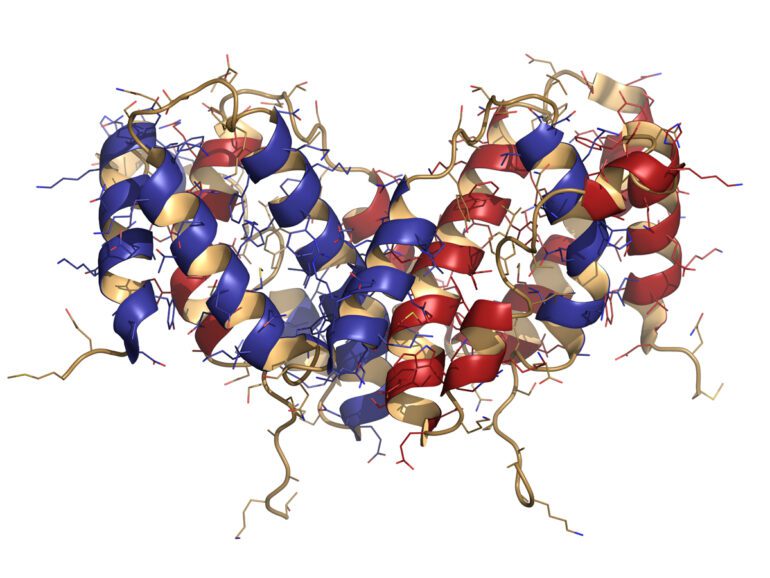TL;DR:
- Researchers at the University of Toronto have developed an AI system called ProteinSGM.
- ProteinSGM uses generative diffusion to create entirely new therapeutic proteins.
- The system learns from image-like representations of existing proteins to generate biophysically-real proteins that can fold into configurations to perform specific functions within cells.
- ProteinSGM promises to speed up drug development by making the design and testing of entirely new therapeutic proteins more efficient and flexible.
- Researchers can now design and test new therapeutic proteins quickly and effectively with ProteinSGM, potentially revolutionizing the field of drug development.
Main AI News:
Researchers at the University of Toronto created ProteinSGM to generate entirely new therapeutic proteins using generative diffusion. The system learns from image-like representations of existing proteins to create biophysically-real proteins that can fold into configurations to perform specific functions within cells.
The development of ProteinSGM is a significant milestone in the pharmaceutical industry, as it promises to revolutionize the way drug development is done. With the use of AI, researchers can now design and test new therapeutic proteins quickly and effectively. This newfound speed and efficiency will enable pharmaceutical companies to create new drugs faster than ever before, ultimately leading to the development of more effective treatments for diseases and conditions.
ProteinSGM’s AI system is designed to speed up the drug development process by making the design and testing of entirely new therapeutic proteins more efficient and flexible. The generative diffusion algorithm used by ProteinSGM is capable of producing unique proteins that have never been seen before, making it a valuable tool for drug development. The video provides a comprehensive breakdown of how the ProteinSGM AI system works, including how it learns from existing proteins and generates new ones.
The potential impact of ProteinSGM on the pharmaceutical industry cannot be overstated. The video highlights the significance of the breakthrough and the potential implications for the future of drug development. With this AI system, researchers can now create entirely new proteins that have never existed before, leading to the creation of new treatments for a variety of diseases and conditions. The video concludes by emphasizing the importance of continued research and development in the field of generative biology and AI to further revolutionize the pharmaceutical industry.
Conlcusion:
The development of ProteinSGM represents a significant breakthrough in the pharmaceutical industry. By using AI to create new therapeutic proteins quickly and effectively, ProteinSGM promises to revolutionize the drug development process. This newfound speed and efficiency will enable pharmaceutical companies to create new treatments for diseases and conditions faster than ever before, ultimately leading to better outcomes for patients.
The use of AI in the pharmaceutical industry is likely to continue growing, and we can expect to see more innovations like ProteinSGM in the future. As such, companies in the industry must invest in AI research and development to stay ahead of the competition and continue delivering cutting-edge treatments.

